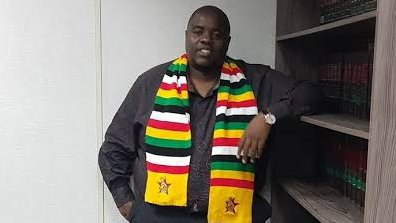
ONE thing which stands out like diamonds in a coal-field when it comes to human beings is their diversity in terms of culture, abilities, disabilities, ethnic backgrounds, language, age, sexuality, gender, sex, race, socio-economic status and tastes, among other things.
Given that human beings are heterogeneous by way of their constitution, some scholars are persuaded to intimate that the only thing which is normal under the sun is difference. It is the intention of this opinion piece to walk readers through one of the most least understood disability, which is autism.
Autism, which is sometimes referred to as either Asperger Syndrome or Pervasive Developmental Disorder, is a generic term used to cover all autistic and autistic-like behaviours or disorders.
Autism, therefore, by way of characterisation may imply the absence or severe impairment of two-way verbal and non-verbal social interaction and an inability to use imagination.
Activities of children with autism are generally dominated by stereotyped and repetitive actions and routines.
Children with autism are not in any way a homogeneous group, they are individuals who have unique personalities and should be dealt with alertness to their nuances.
In terms of the aetiology (causation) of autism two broad theoretical frameworks have been considered historically-biological and psychodynamic.
The biological perspective assumes that genetic factors are responsible for causing autism, while the psychodynamic assumption views family interactions as casual factors in autism.
- New perspectives: ‘We also died for this country!’
- New perspectives: ‘We also died for this country!’
- Salvation Army partners Padare in GBV fight
- Guruve women yearn for political recognition
Keep Reading
The latter perspective may need to be fleshed out a bit as it involves factors which may be within the influence of parents.
The apologists of psychodynamic aver that children develop autism as a result of rejection from their parents; they withdraw from this rejection by building defences against psychological pain.
As children withdraw from rejection, they retreat to an inner world which does not interact with the outside world involving people.
It is important to appreciate that theories by their nature serve to explain, describe and predict phenomenon.
This understanding of theory should help people to have thought processes that are informed by science and also by their own frames of knowledge as stemming from indigenous knowledge systems.
A hybrid approach to understanding autism should be embraced because knowledge is not only a function of science, but a by-product of intersectionality.
All the same, where the psychodynamic approach to understanding autism is concerned, the implication may be that parents should strive to develop an affiliative bonding with their children.
In terms of language and vocal traits or characteristics of a child with autism, the child may lack nonverbal communication skills such as nodding, gesturing and facial expression.
If parents observe the above, they should not just rush to conclude that it is autism, as these challenges could be flagging up speech and language problems or hearing impairment.
Parents and teachers are neither developmental paediatricians, child psychologists nor occupational therapists to diagnose autism, rather they should merely sound out their observations to the specialists above for investigation, diagnosis, prognosis and placement in the case of educational purposes.
However, in the event that a child has been diagnosed with autism and showing the above language behavioural traits, parents and teachers can accompany verbal statements with physical actions and nonverbal actions (“Come here” — take the child’s hand and pointing to the area you wish to go to, or guiding him or her in that direction).
The child with autism may also exhibit unusual responses to sound, have little or no language, uses more non-verbal than verbal language. For example, pulling a person to a place in order to get the desired object. The child with autism also becomes more visible by lacking emotional tone even when crying, may also not respond to verbal communication and may echo words that others have said immediately (technically called immediate echolalia) or from something heard previously (delayed echolalia).
If the above behaviours are characterised as autism by specialists, it is important for teachers and guardians to encourage social language like verbal and nonverbal greetings.
Children with autism enjoy playing with inanimate things like objects such as keys and toys of trains. Inanimate things are not human beings. Male adults with autism have been observed to love pictures of beautiful women and when this writer went to Japan on a brain-exchange visit he observed pictures of beautiful women pasted on the walls of the rooms of male adults with autism in their community dwellings.
People with autism can also be involved in self-injurious behaviours like biting and scratching themselves and hitting themselves against walls.
Their threshold for pain is said to be very low. They can typically be described as being self-abusive, disengaged from the social world as they are asocial in the way they relate with others.
They may spew out saliva on others, collect other people’s things without that awareness of seeking permission for whatever they want.
Social networks of children with autism may say that they are stealing, but to them it is just taking without any ethical implication of stealing.
They may cry when they are supposed to laugh. They may not even worry about being left on their own, they may eat non-edible substances.
They may also not be aware of dangers like cars, swimming pools or heights, may not even exhibit sympathy or insight into how others feel and may show aggression or destructive tendencies.
It is, however, important to understand that the cognitive structures of people with autism may be sluggish or of average or above average intelligence. These children may have or not have good visual skills.
Research has also established that they have good rote memory (they may sing for you the song Chitekete word for word), and may have special skills in arithmetic and music.
Largely, behaviourists have encouraged parents, guardians and teachers to reward periods of focused learning with things the children enjoy doing such as music or a favourite books or toys.
Nicholas Aribino is the ZimCare Trust country director. He writes here in his personal capacity.








